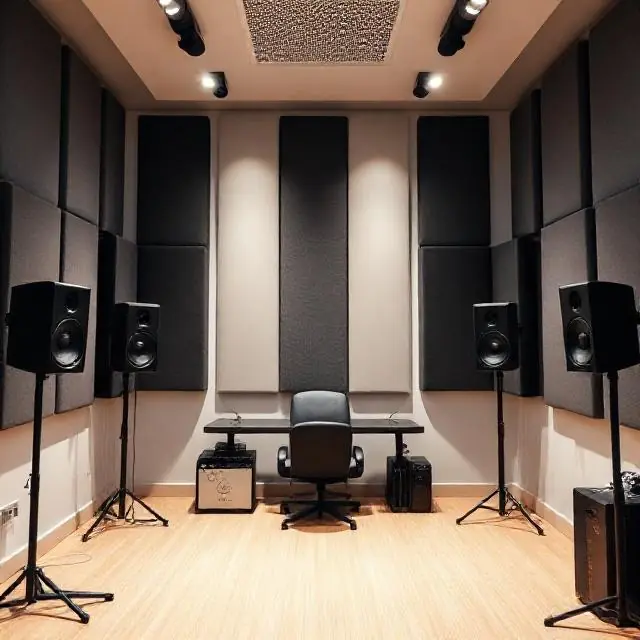Creating a reliable recording or mixing environment is one of the biggest challenges for musicians, producers, and audio engineers. Even with quality microphones, interfaces, and monitors, poor acoustics can ruin the accuracy of your sound. Whether you work in a small bedroom studio or a full-scale commercial environment, unwanted reflections, noise, and frequency imbalances can affect the clarity and consistency of your recordings.
This guide breaks down the most common sound problems in home and professional studios and how to fix them. It also provides practical acoustic treatment solutions, monitoring tips, and soundproofing insights so you can create a space you can trust.
Room Reflections and Echoes
One of the most widespread issues in studio environments is excessive reflections. Hard surfaces like bare walls, ceilings, and floors bounce sound waves, creating echoes and smearing the original audio.
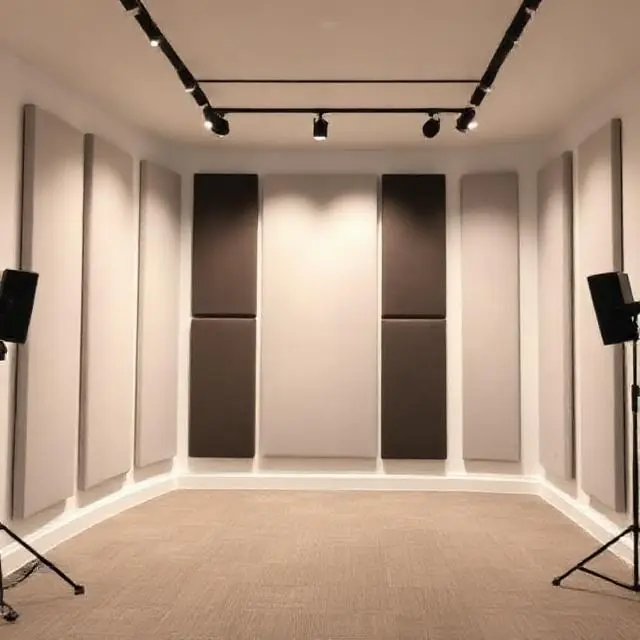
Why Reflections Are a Problem
Early reflections can alter the perceived frequency balance of what you hear. This leads to inaccurate mixes and vocal recordings that sound roomy or washed out.
How to Fix Room Reflections
Here are effective ways to reduce reflections in small and large studio spaces:
- Install broadband acoustic panels at first reflection points.
- Treat bare corners and wall junctions with thick absorption.
- Add ceiling clouds above the listening or recording position.
- Use rugs or soft furniture to reduce floor reflections.
- Position monitors so they fire down the longest dimension of the room.
Proper acoustic treatment helps create a tighter and more controlled listening environment.
Standing Waves and Bass Buildup
Low frequencies are especially difficult to handle because they reflect off boundaries and form pressure zones. This creates peaks and nulls across the room, making the bass sound boomy, hollow, or uneven.
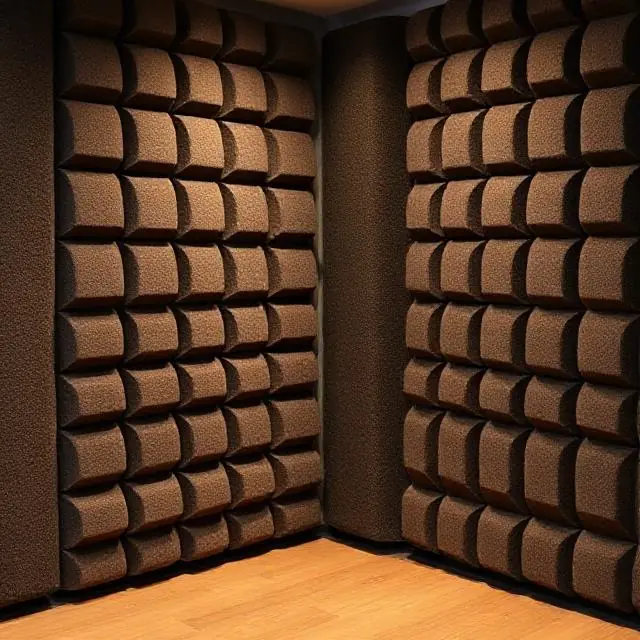
Signs of Bass Problems
You might notice:
- Bass notes that jump out much louder than others.
- Low frequencies disappearing in certain spots.
- Muddy or unclear low end in your mixes.
- Inconsistent bass response depending on where you sit.
How to Fix Bass and Standing Wave Issues
Bass treatments need density and thickness. Consider these solutions:
- Install bass traps in all vertical corners.
- Add additional traps along ceiling or floor corners.
- Use thick fiberglass or mineral wool panels for absorption.
- Avoid sitting too close to walls or corners when mixing.
- Test your room using sine sweeps to find problem frequencies.
Improving low-frequency control helps create a mix environment you can rely on.
Flutter Echo and High Frequency Ringing
Flutter echo is a rapid pinging or zipping sound created when sound bounces repeatedly between parallel surfaces. Home studios with bare walls often suffer from this problem.
How Flutter Echo Affects Recordings
Flutter echo creates harshness, adds unwanted color to vocals, and makes instruments sound metallic.
How to Eliminate Flutter Echo
Here are simple fixes:
- Break up parallel surfaces with absorption panels or diffusers.
- Use bookshelves or furniture to interrupt the reflections.
- Add wall-to-wall treatments in key areas of the room.
Reducing flutter echo results in smoother high frequencies and more natural recordings.
External Noise and Sound Leakage
Noise entering or leaving your studio affects your ability to record clean audio. Home studios often struggle with neighbors, traffic, or household sounds. Professional environments must also prevent sound from leaking to adjacent rooms.
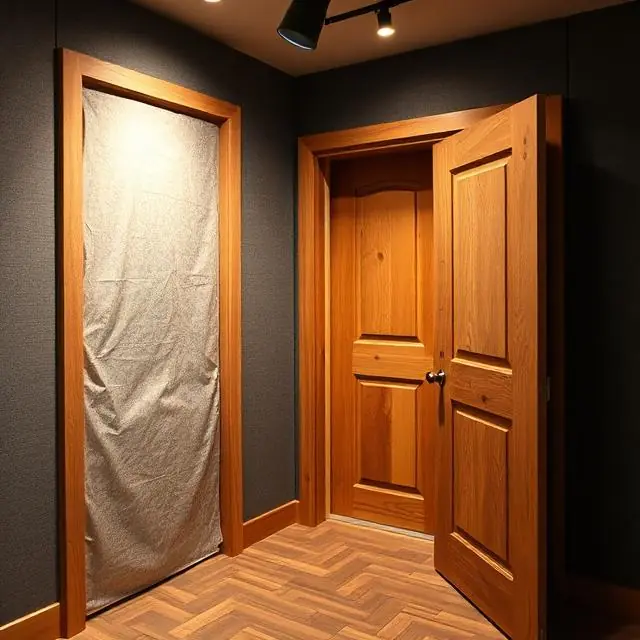
Types of Noise Problems
- Airborne noise such as speech, music, or outdoor sounds.
- Impact noise such as footsteps, doors closing, or vibrations.
- Equipment noise from HVAC systems or computers.
How to Fix Sound Leakage
Soundproofing requires adding mass, sealing gaps, and isolating vibration.
Solutions include:
- Using dense soundproofing materials such as MLV, acoustic drywall, or sound isolation boards.
- Sealing gaps around doors, windows, and cable pass-throughs.
- Installing door sweeps or acoustic doors.
- Using floating floors or decoupled wall structures in professional builds.
Proper soundproofing reduces disturbances and protects your recording quality.
Poor Monitor Placement
Even if your acoustic treatment is solid, improper speaker placement can distort your sound. Many home studios place monitors too close to walls, angled incorrectly, or unevenly spaced.
Signs of Bad Monitor Placement
- The stereo image feels off center or unfocused.
- Bass feels inconsistent or overly hyped.
- The sweet spot feels small or unclear.
How to Fix Monitor Placement
Use these guidelines for accurate monitoring:
- Form an equilateral triangle between your head and the monitors.
- Keep tweeters at ear level.
- Maintain equal distance from the left and right walls.
- Pull monitors away from the wall when possible.
- Use isolation pads or stands to reduce vibration.
Correct positioning enhances translation between your studio and other listening environments.
Reverberant or Untreated Vocals
Recording vocals in an untreated room can inject unwanted room tone into your tracks. This makes it difficult to achieve a clean and intimate sound.

How to Recognize Vocal Reflection Issues
- Hollow, boxy, or roomy sounding vocals.
- Excessive reverb even when no effects are added.
- Difficulties blending vocals into the mix.
How to Fix Vocal Recording Problems
- Use a portable vocal booth or reflection filter.
- Surround the vocalist with thick absorption panels.
- Record away from corners and walls.
- Position the microphone to minimize reflections.
These adjustments create a controlled vocal environment that delivers clarity and detail.
Electrical Hum and Interference
Electrical noise can creep into your recordings through cables, power supplies, or faulty grounding.
Common Sources of Studio Hum
- Ground loops.
- Fluorescent lighting.
- Poorly shielded cables.
- Devices sharing power sources.
How to Fix Electrical Noise
- Use balanced XLR or TRS cables.
- Keep audio cables away from power cables.
- Use a power conditioner or isolated power source.
- Avoid daisy chaining extension cords.
- Ensure all equipment shares a common ground.
Reducing electrical interference helps maintain clean recordings with minimal background noise.
Acoustic Imbalance Between Left and Right Channels
Some studios experience imbalances due to uneven treatment or asymmetrical layouts.
Signs of Acoustic Imbalance
- Mixes leaning too heavily to one side.
- Vocals drifting off center.
- Uneven reflections affecting stereo clarity.
How to Fix Channel Imbalance
- Ensure your room layout is symmetrical when possible.
- Treat both side walls equally.
- Sit centered in the room.
- Test your monitoring setup with pink noise or reference tracks.
Balanced acoustics help you create mixes that translate consistently across systems.
Why People Trust SoundKrafted.com for Studio Soundproofing and Acoustic Solutions
Creating an accurate and professional studio environment requires the right materials, expertise, and installation guidance. This is where SoundKrafted.com stands out.
SoundKrafted provides high quality soundproofing products, acoustic panels, bass traps, and complete treatment solutions for different spaces including home studios, podcast rooms, rehearsal spaces, home theaters, and professional audio environments.
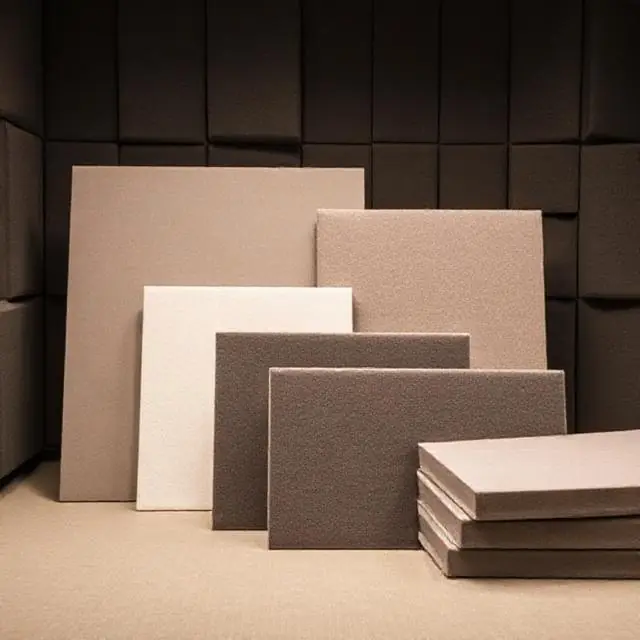
People trust SoundKrafted because:
- We offer scientifically tested acoustic materials that deliver real results.
- Our solutions address common studio problems such as reflections, bass buildup, noise leakage, and flutter echo.
- We help clients plan and customize treatments based on room size, layout, and acoustic goals.
- We provide both DIY friendly products and professional grade options.
- Our team offers support for installation, spacing, and placement so customers get the best acoustic performance possible.
With SoundKrafted, you get reliable products designed to create accurate, controlled, and soundproof spaces that elevate your recording and mixing workflow.
Conclusion and Call to Action
Fixing common sound problems in home and professional studios is essential for achieving clean recordings, clear mixes, and dependable monitoring. Issues like reflections, bass buildup, noise leakage, and improper monitor placement can compromise your sound, but the right combination of acoustic treatment and soundproofing materials can transform any room.
If you are ready to improve your studio acoustics, explore the professional soundproofing solutions at SoundKrafted.com. Whether you need acoustic panels, bass traps, isolation materials, or expert guidance, we can help you create a studio environment you can trust.

